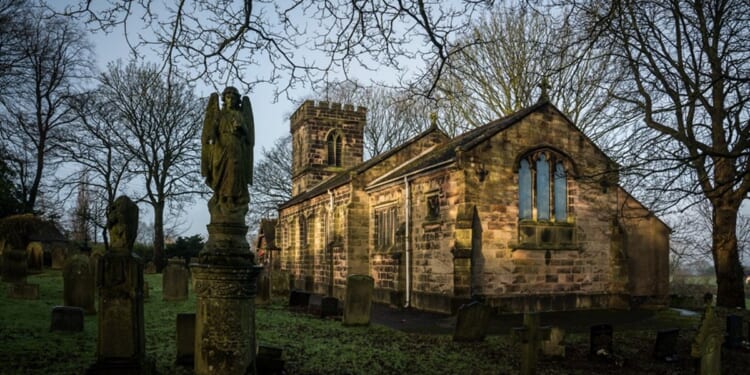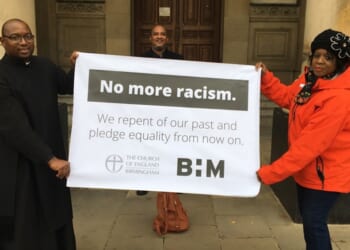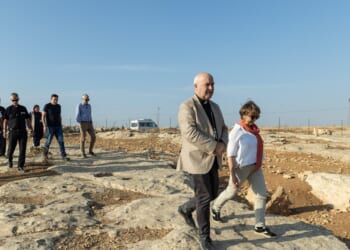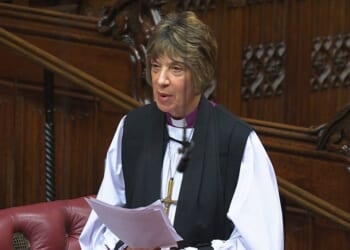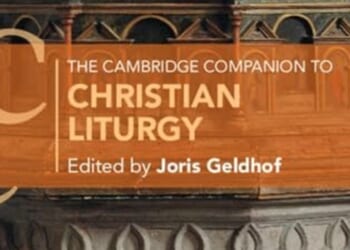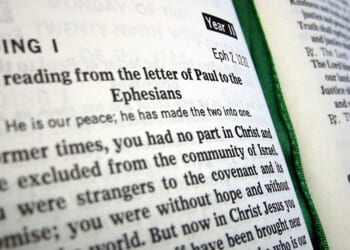THE Consistory Court of the diocese of Lichfield has granted a faculty, subject to strict conditions, for the creation of a dedicated area for the burial of cremated remains (“ABCR”) in consecrated ground at St Chad’s, Bagnall, a Grade II listed building in a conservation area.
The churchyard at St Chad’s is closed for coffin burials, but one area remains suitable for the interment of ashes. The churchwardens and a member of the PCC petitioned for a faculty for the creation of the ABCR in a triangular plot in consecrated ground.
The PCC had previously interred ashes in existing graves, or — if there was no suitable family grave — in a dedicated plot, marked with a headstone, which was smaller than those used historically for coffin burials. The PCC wished to extend that practice into the new ABCR, with headstones compliant with the current churchyard regulations from the diocese for coffin interments.
The DAC approved the location for the ABCR, but did not approve the plot size and the use of headstones as proposed by the PCC. The DAC’s view was that the plot size was larger than required, and that the use of flat memorial stones was preferred because they accommodated movement around, and maintenance of, the ABCR.
The Diocesan Chancellor, the Worshipful Dr Anthony Verduyn, said that the DAC’s objections had been well made. Interment of cremated remains was “not the same as interment of a coffin”, he said, “and the features of memorialising a coffin burial should not be replicated.”
The reuse of plots was likely to arise sooner in respect of interred ashes than in respect of coffin burial, he said. Although only one interment of ashes was currently expected per year in the ABCR, that might increase, and people from outside the parish might seek interment of relatives there. It could not be assumed “that space will not be much in demand, and that generous plots should be made available”.
For those reasons, the Chancellor rejected the PCC’s proposals for plot size and memorials. The question then arose whether the PCC’s petition should be refused in its entirety, or whether the faculty should be granted on strict terms.
The Chancellor said that, because there was currently no consecrated ground for coffin burials or burials of ashes in Bagnall, the case for the authorisation of an ABCR was a strong one, supported by the PCC, the DAC, and the local community. The Chancellor decided that a faculty should therefore be granted, but on strict conditions.
Those conditions were: first, that the only memorial at the point of interment that might be permitted was a plaque installed flush to the surface of the ground. The ground might be terraced if necessary. That condition did not preclude other memorials not located at the point of interment, such as a Book of Remembrance. The second condition was that no plaque should be larger than 450mm in its longest dimension.
Third, individual plots (which might accommodate more than one set of ashes) must be no more than 600mm in their longest dimension, and arranged in rows of contiguous plots.
Fourth, interments must normally be directly into the ground. The incumbent may authorise the use of a container on pastoral grounds in exceptional cases. If a container is used, however, it must be of perishable material.
Fifth, no interments of cremated remains are to be allowed in any part of the churchyard other than the area set aside by this faculty, unless authorised by further faculty, provided that, in so far as the churchyard remains open for the burial of cremated remains, such remains may be interred without further faculty in a grave within which a relative of the person whose remains are to be interred has already been interred.
Any memorials that do not comply with those conditions will be liable to be removed by order of the Consistory Court.

